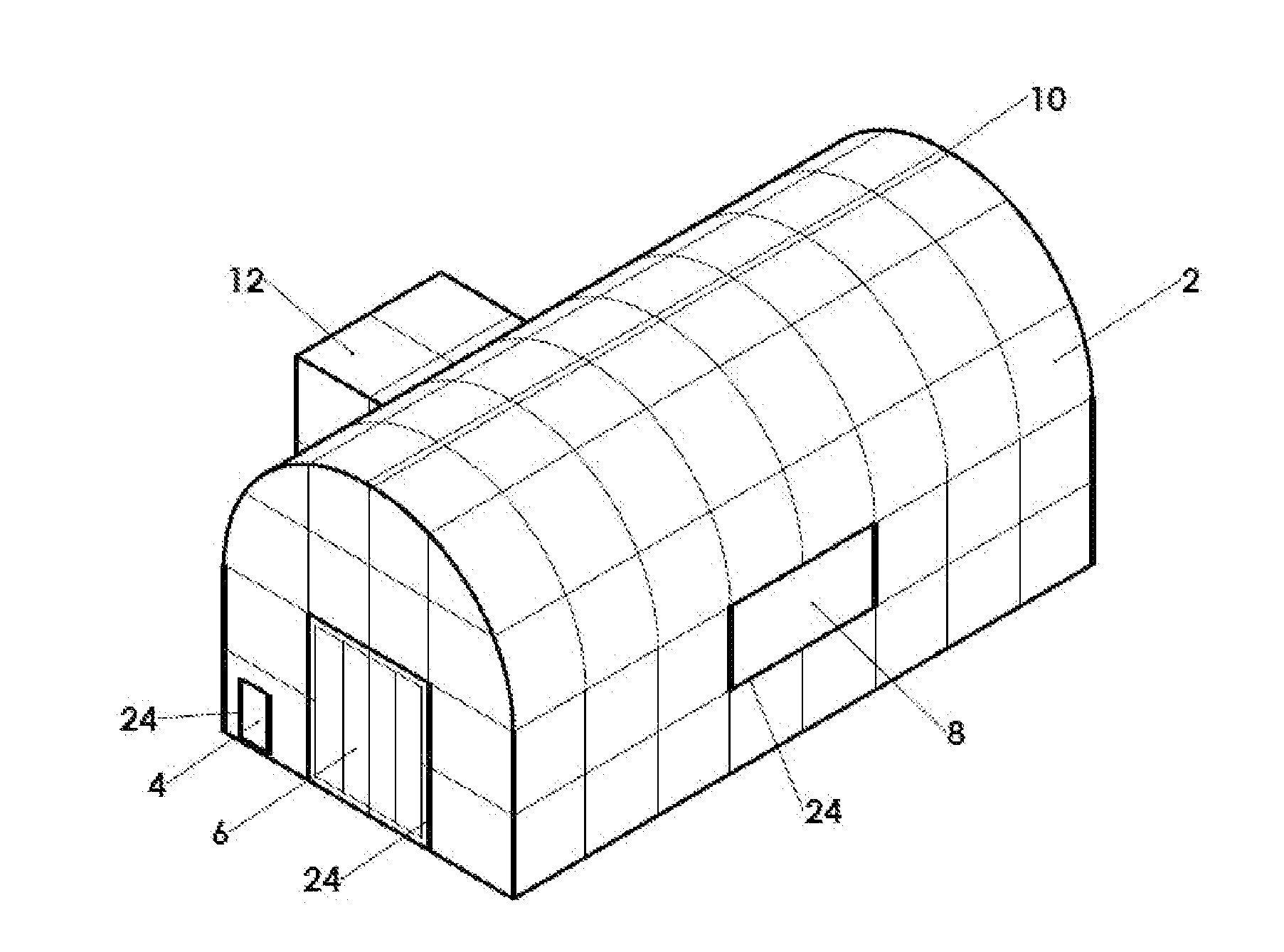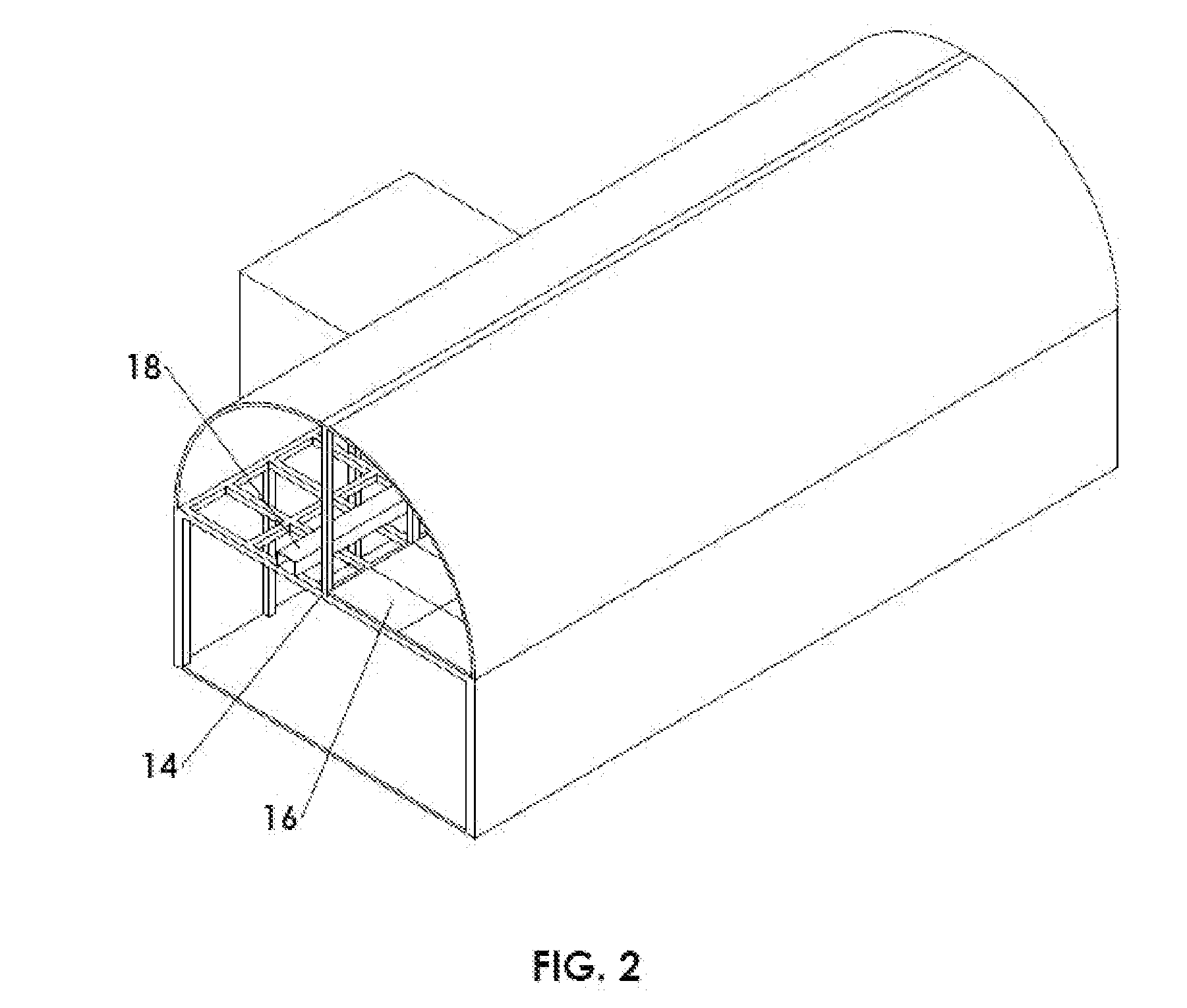Rapid assembly lightweight modular structure
- Summary
- Abstract
- Description
- Claims
- Application Information
AI Technical Summary
Benefits of technology
Problems solved by technology
Method used
Image
Examples
Embodiment Construction
1. Definitions
[0030]NASA radiation dose-equivalent limits recommended for U.S. astronauts in low Earth orbit:
Exposure TimeVital Organ, RemOccular, RemSkin, RemCareer100-400*400600Annual5020030030 Days25100150
(Ref. NASA Technical Paper 309, Radiation Protection for Human Missions to the Moon and Mars, at p. 2 (1991))
2. Best Mode of the Invention
[0031]FIG. 1 shows an exterior isometric view of the best mode contemplated by the inventor of the rapid assembly lightweight modular structure 10 utilized as a habitation facility according to the concepts of the present invention.
3. How to Make the Invention
[0032]As shown in FIG. 1 the structure is comprised of modular composite panels 2, an airlock unit 4, one set of composite hangar doors comprised of four door panels 6, and one window 8. An optional connecting walkway structure 12 permits a plurality of these structures to be connected together to provide additional habitable space.
[0033]As shown in FIG. 2 interior rafters 14 and composit...
PUM
 Login to View More
Login to View More Abstract
Description
Claims
Application Information
 Login to View More
Login to View More - R&D
- Intellectual Property
- Life Sciences
- Materials
- Tech Scout
- Unparalleled Data Quality
- Higher Quality Content
- 60% Fewer Hallucinations
Browse by: Latest US Patents, China's latest patents, Technical Efficacy Thesaurus, Application Domain, Technology Topic, Popular Technical Reports.
© 2025 PatSnap. All rights reserved.Legal|Privacy policy|Modern Slavery Act Transparency Statement|Sitemap|About US| Contact US: help@patsnap.com



